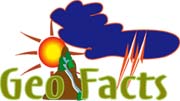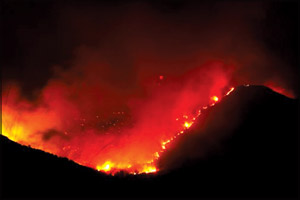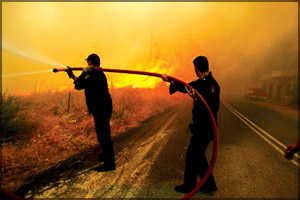 Fires
both natural and man-made Fires
both natural and man-made
What
is the hot topic in the world when it comes to natural disasters? If you
are aware of current news and are regularly updated through the media,
you would be aware of the recent forest fire that caused many deaths. It
destroyed many lands and took many lives, showing the might of fire.
Throughout the summer of 2007, a number of forest fires burned across
Greece because of a combination of extreme temperatures, sustained
strong winds. Fire-fighters managed to extinguish (put out) the majority
of these fires relatively fast.
However, starting on August 24, a series of massive wildfires that
broke out, mainly in western Peloponnese and southern Euboea, soon got completely out of control, marking the
beginning of a first-time crisis in modern Greek history.
southern Euboea, soon got completely out of control, marking the
beginning of a first-time crisis in modern Greek history.
As of August 28, lives numbering 64 had already been lost in the
inferno and many others rushed to hospitals to be treated for
respiratory failure and burns. Dozens of villages were wiped out and
several thousands of people were left homeless.
Wildfires take place not only in Greece, but in many places around
the world, including much of the vegetated areas of Australia as well as
the Veld (wide open rural spaces of South Africa or southern Africa and
in particular to certain flatter areas or districts covered in grass or
low scrub)in the interior and the Fynbos(natural shrubland vegetation
occurring in a small belt of the Western Cape of South Africa, mainly in
winter rainfall coastal and mountainous areas with a Mediterranean
climate). The forested areas of the United States and Canada are also
susceptible (open) to wildfires.
The climates are sufficiently moist to allow the growth of trees, but
feature extended dry, hot periods. Fires are particularly common in the
summer and fall (autumn) and during droughts when fallen branches,
leaves and other material can dry out and become highly flammable
(ability to catch fire). Wildfires are also common in
 grasslands
and scrublands. grasslands
and scrublands.
Wildfires tend to be most common and severe during years of drought
and occur on days with strong winds. With extensive urbanisation of wild
lands, these fires often involve destruction of suburban homes located
in the wild land urban interface, a zone of transition between developed
areas and undeveloped wild land.
What do you think causes these disastrous fires? You know that a fire
needs fuel, oxygen and heat to survive. In forests, trees and bushes
provide the fuel. In houses and buildings, the fuel is wood, furniture,
books and paper. Oxygen is not hard to find, as it is all around us in
the air. In addition, without heat, the fire could not continue.
When wood reaches 572 degrees Fahrenheit, it gives off a gas, which
reacts with oxygen to make a flame. The flame will heat the remaining
wood, making the fire grow even stronger. This will happen even on cold
days.
The temperature at which something can be set on fire is known as its
flash point. Paper burns at 451 degrees Fahrenheit. Socks do not burn
until the temperature reaches 600 degrees Fahrenheit.
Every material, even iron, has a flash point. Lightning, campfire
sparks, flint or matches can help wood reach the 572 degrees Fahrenheit
temperature necessary to create a fire. Either man's negligence or
forces of nature can cause fires.
Earthquakes, like the 1906 San Francisco earthquake, can cause fires.
The San Francisco fire spread because water was not available to put out
the blaze. In 1923, a Tokyo earthquake caused a fire at lunchtime
because tens of thousands of charcoal braziers (grills) had overturned
and burned. Fires can also be caused by erupting volcanoes, drought or lightning.
volcanoes, drought or lightning.
Since there are obviously no fire hydrants in a forest, it is more
difficult to fight wildfires. Tanker trucks cannot be driven in because
of all the trees and the lack of roads.
The trees, bushes, and leaves provide ideal fuel for the fire because
they are so flammable.
So how do fire-fighters go about fighting them? Using a pulaski (a
cross between an axe and a hoe, used to dig a fireline), a large path is
cleared in a big circle around the fire so the blaze is contained in a
ring of dirt.
This area, cleared of branches and dry wood, is known as a fireline
(a strip of land from which all brush and debris have been cleared to
rob a wildfire of its fuel). When the fire reaches this area, it runs
out of fuel and starves to death.
If the fire is too large however, planes and helicopters fly
overhead, dropping special chemicals that smother the flames. This pink,
fire-retardant chemical is called sky jell-o.
Compiled by Janani Amarasekara
|
